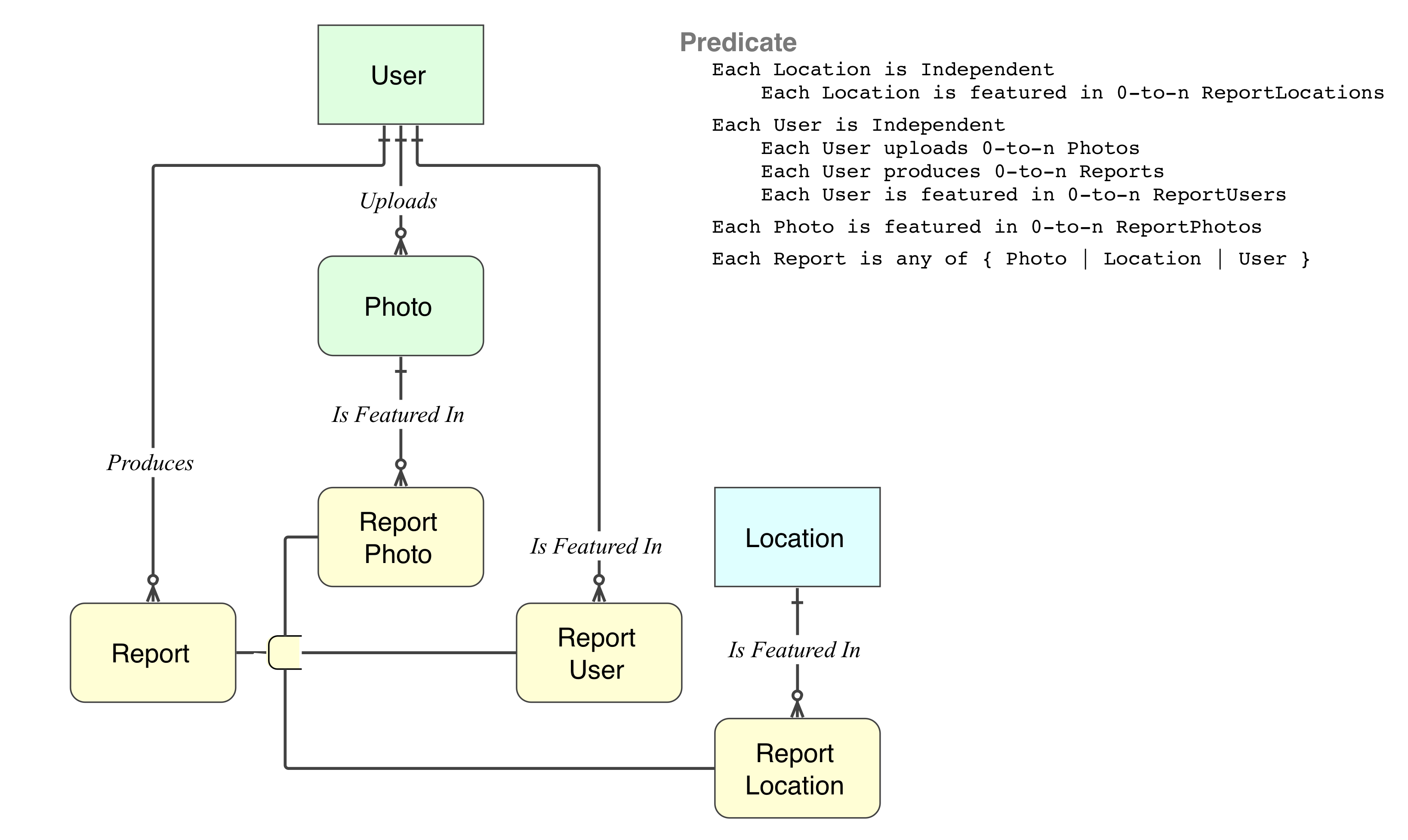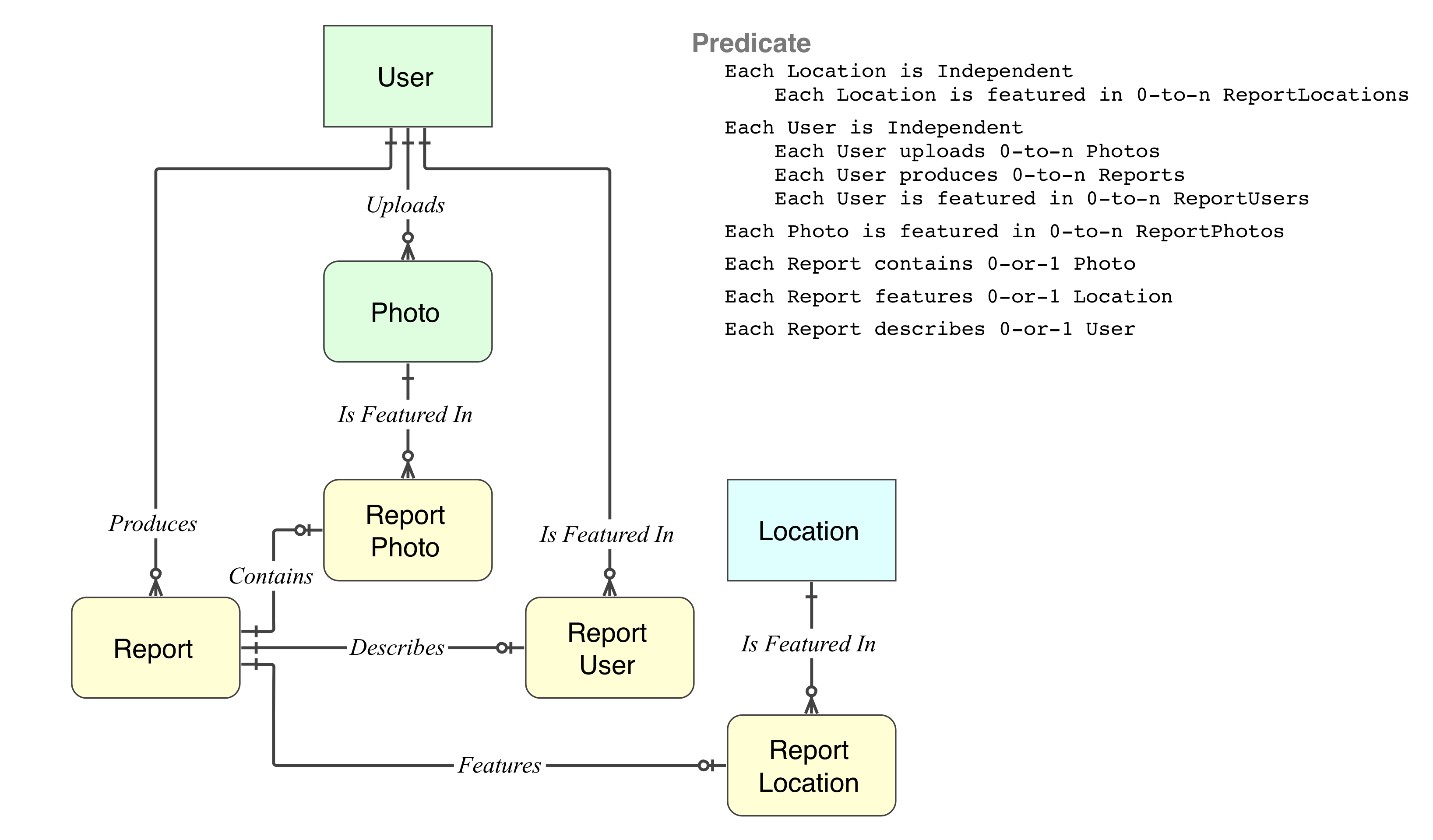How can I relate a primary key field to multiple tables?
I have 4 tables:
User
Reports
Photos
Locations
I am allowed to report photos, users, and locations.
The primary key of my Rep
-
The Problem
You cannot do this - a foreign key (Reported_Id) cannot reference three tables at once
Seems to be a problem regarding the understnading of the data ... rather than a technical problem regarding an FK pointing to three PKs.
or one of three depending on some other column in your table. Just cannot be done.
That is not correct. Such a requirement is fairly straight-forward in a Relational database:
the Relational Model is logical, it is founded on First Order Predicate Calculus (aka First Order Logic).
Having a solid mathematical basis gives it great power.the relations are logical creatures
PhysicalRecord IDsare not logicalthere is no limit to what can be defined in FOL,
there is nothing that cannot be defined in FOL
therefore there is nothing that cannot be defined in a Relational database (and of course SQL, its data sublanguage)
.Note that what the "theoreticians" promote and market as "relational" is in fact a 1960's Record Filing System, which has none of the Relational Integrity; Relational Power; or Relational Speed that a database that complies with the Relational Model has. Such systems are identified by their use of physical
Record IDs. In such primitive systems, yes, data is not logical, and logical relations or relationships cannot be defined. Further, the SQL code required is horrendous.
What you are seeking in a logic article, an OR Gate. The specific nature of the OR Gate (there are several forms) needs to be defined: that is the modelling exercise.
The Data
Forget about
IDcolumns, that will only serve to cripple the data modelling exercise. Concentrate on the data, what the data means, and what other data it relates to. Perhaps you are trying to declare something along these lines (these are FOPC/FOL Predicates):- Each User is Independent
- Each Photo is Independent
- Each Location is Independent
- Each User makes 0-to-n Reports
- Each Report is any of { Photo | Location | User }
That is very loose, we can tighten it up. Let's proceed to ...
Entity Relation • Subtype
This data model (ER level) implements a Non-Exclusive Subtype cluster for Report.

All Predicates are explicit in an IDEF1X data model, and thus can be read from it, however, I have given the relevant Predicates in text form on the right.
Notation
All my data models are rendered in IDEF1X, the Standard for modelling Relational databases since 1993
My IDEF1X Introduction is essential reading for beginners
The IDEF1X Anatomy is a refresher for those who have lapsed.
Non-Exclusive Subtype - refer to Subtype for full details on Subtype implementation.
- for contrast or interest re Exclusive Subtype, refer to this answer.
Entity Relation • Optional Column
The above implements the Predicate:
- Each Report is any of { Photo | Location | User }
meaning that a Report must be at least one of { Photo | Location | User }.
However, if that is not the case, if Report can be none of { Photo | Location | User }, that means { Photo | Location | User } are each Optional Columns.

Determination
one of three depending on some other column in your table
Determining which, or all, the Subtypes or Optional Columns that are used for each Report is not an issue:
Exclusive Subtype
Yes, that does require a Discriminator column in the Basetype.Non-Exclusive Subtype
There are multiple Subtypes for the Basetype, therefore a Discriminator column in the Basetype is irrelevant.- Determination is via a
SELECTfrom the Subtype table (which, by definition, has the exact same PK as the Basetype table).
- Determination is via a
Optional Column
An indicator in the Basetype would be redundant.- Determination is via a
SELECTfrom the Optional Column table (ditto). - Generally, one would create a
VIEWfor the Basetype, egReport_V, and include all possible columns.
- Determination is via a
讨论(0)
- 热议问题

 加载中...
加载中...